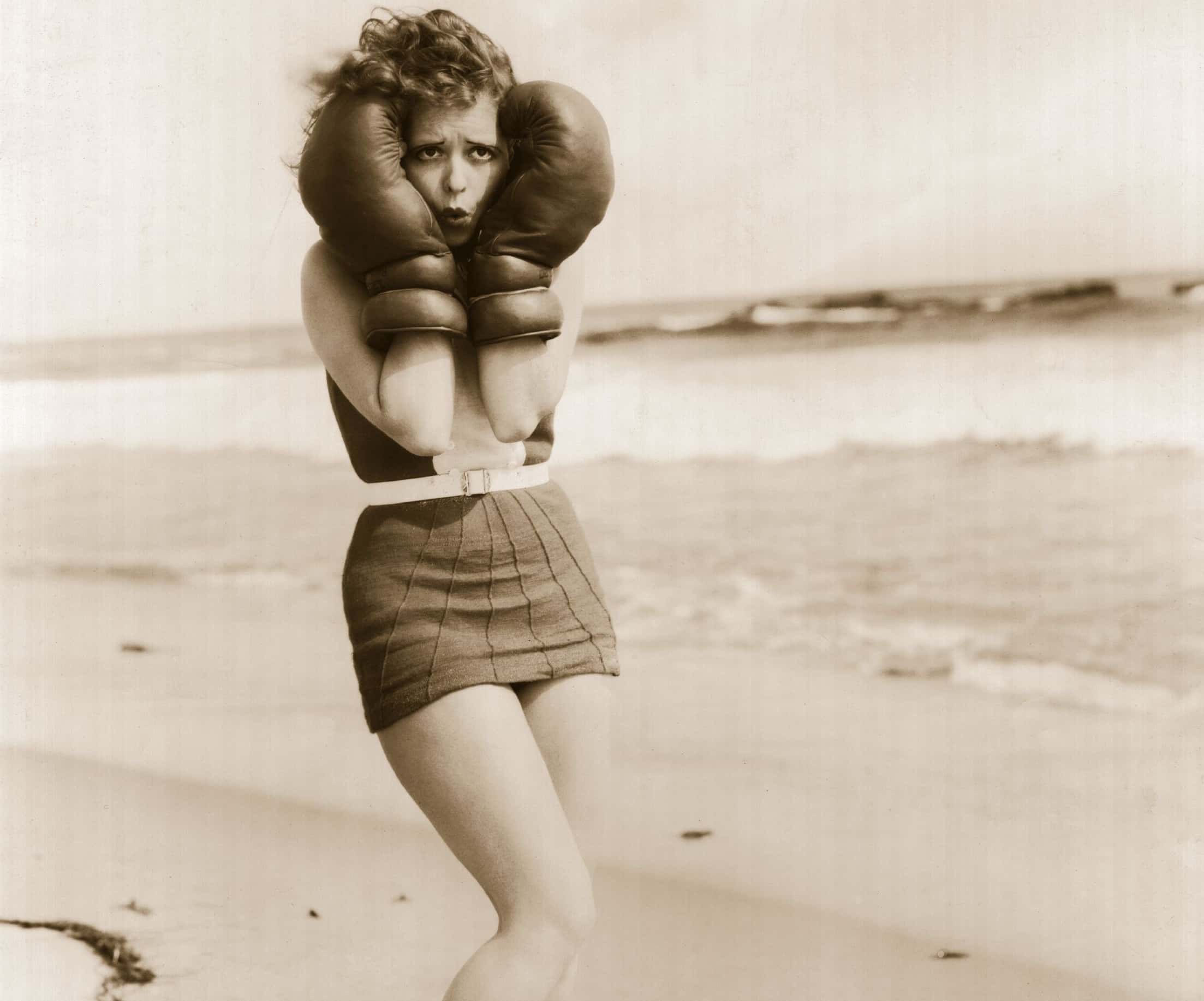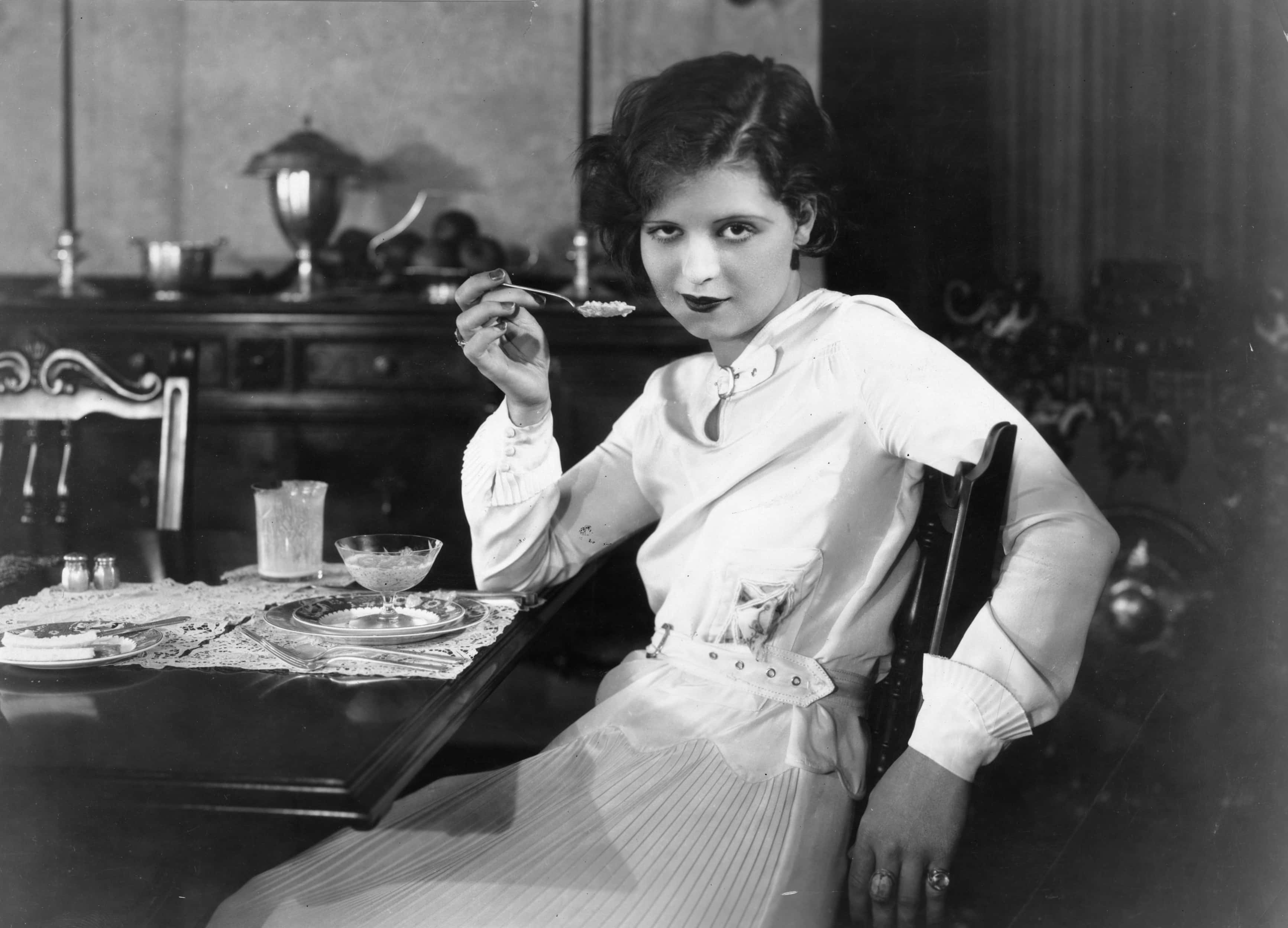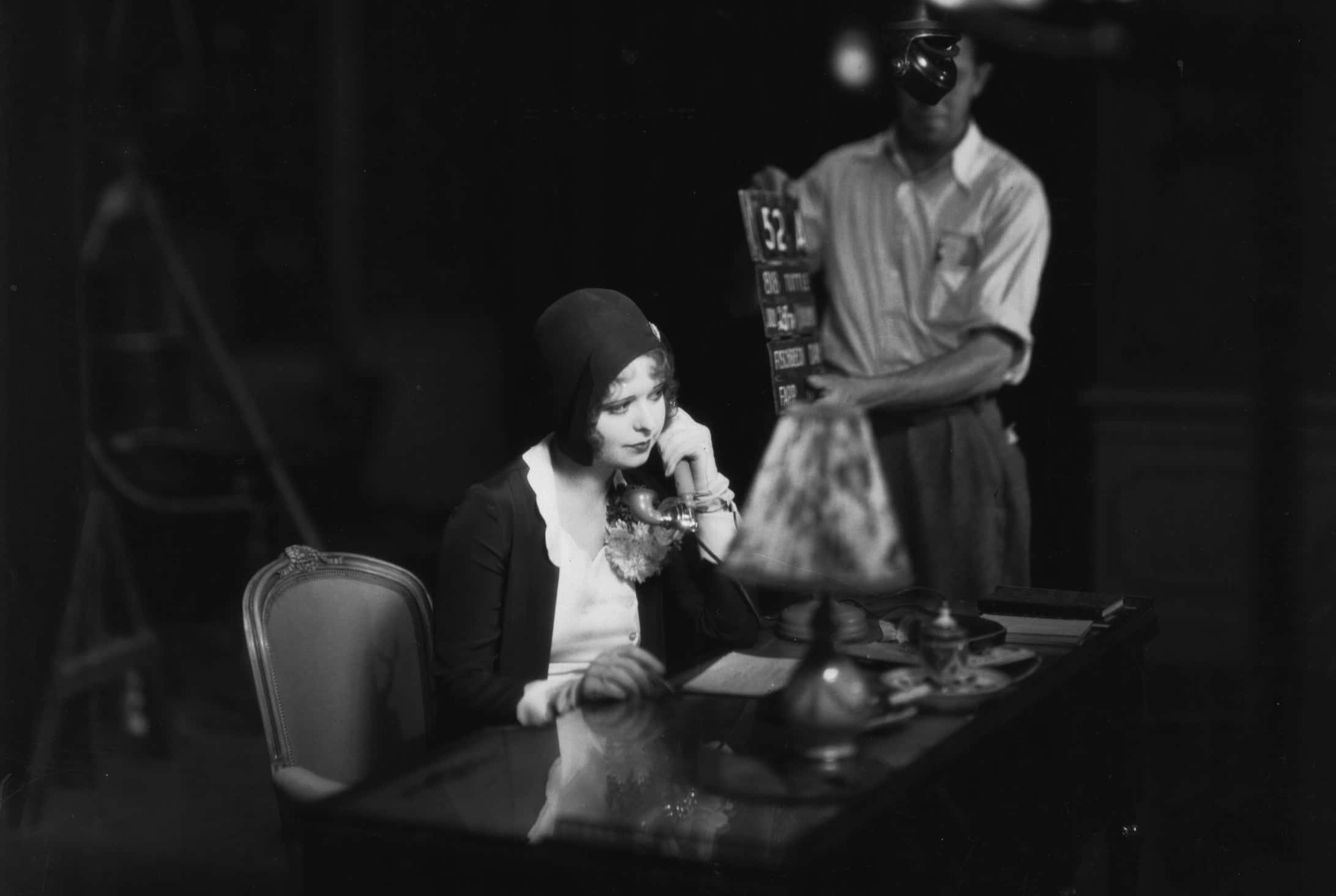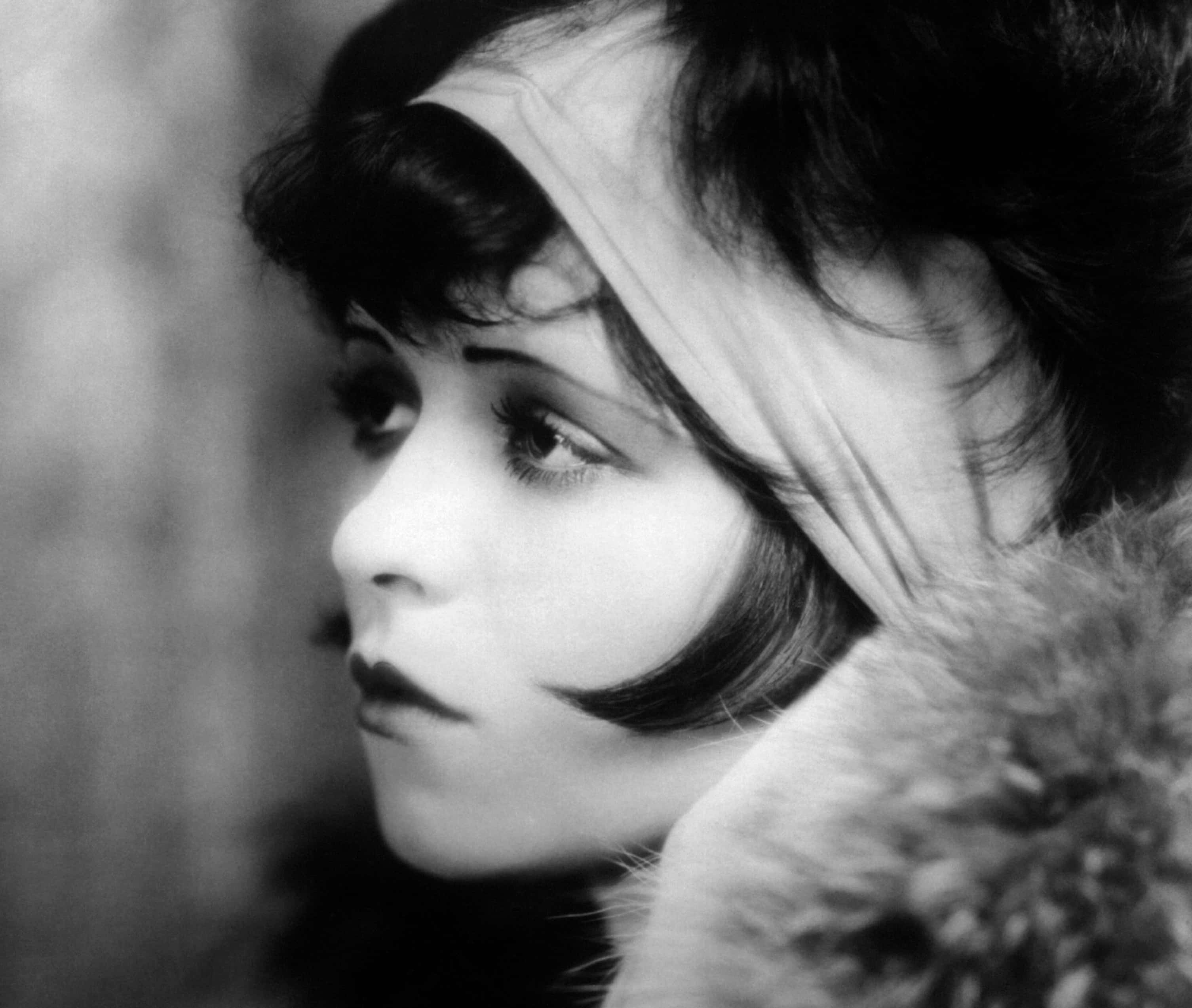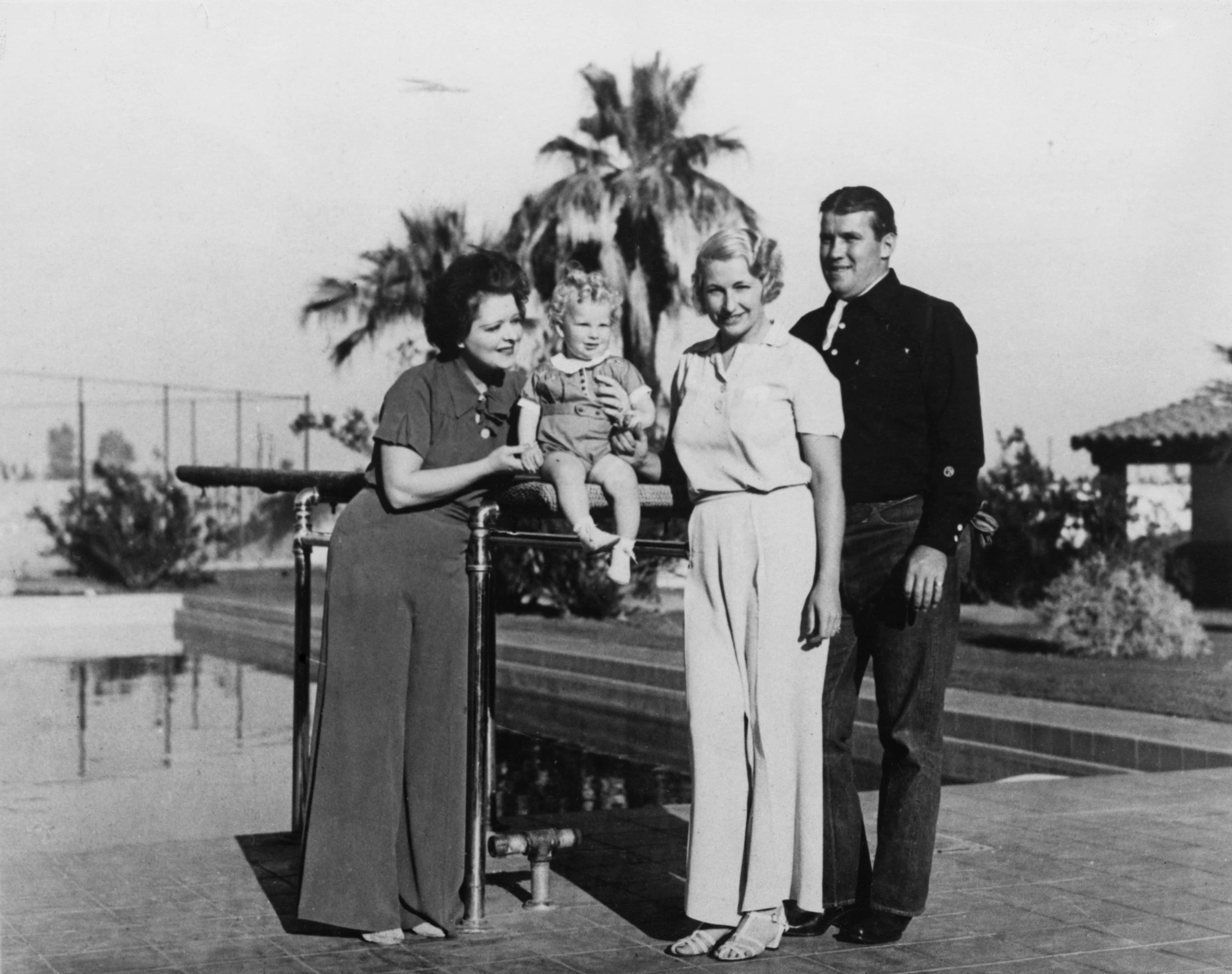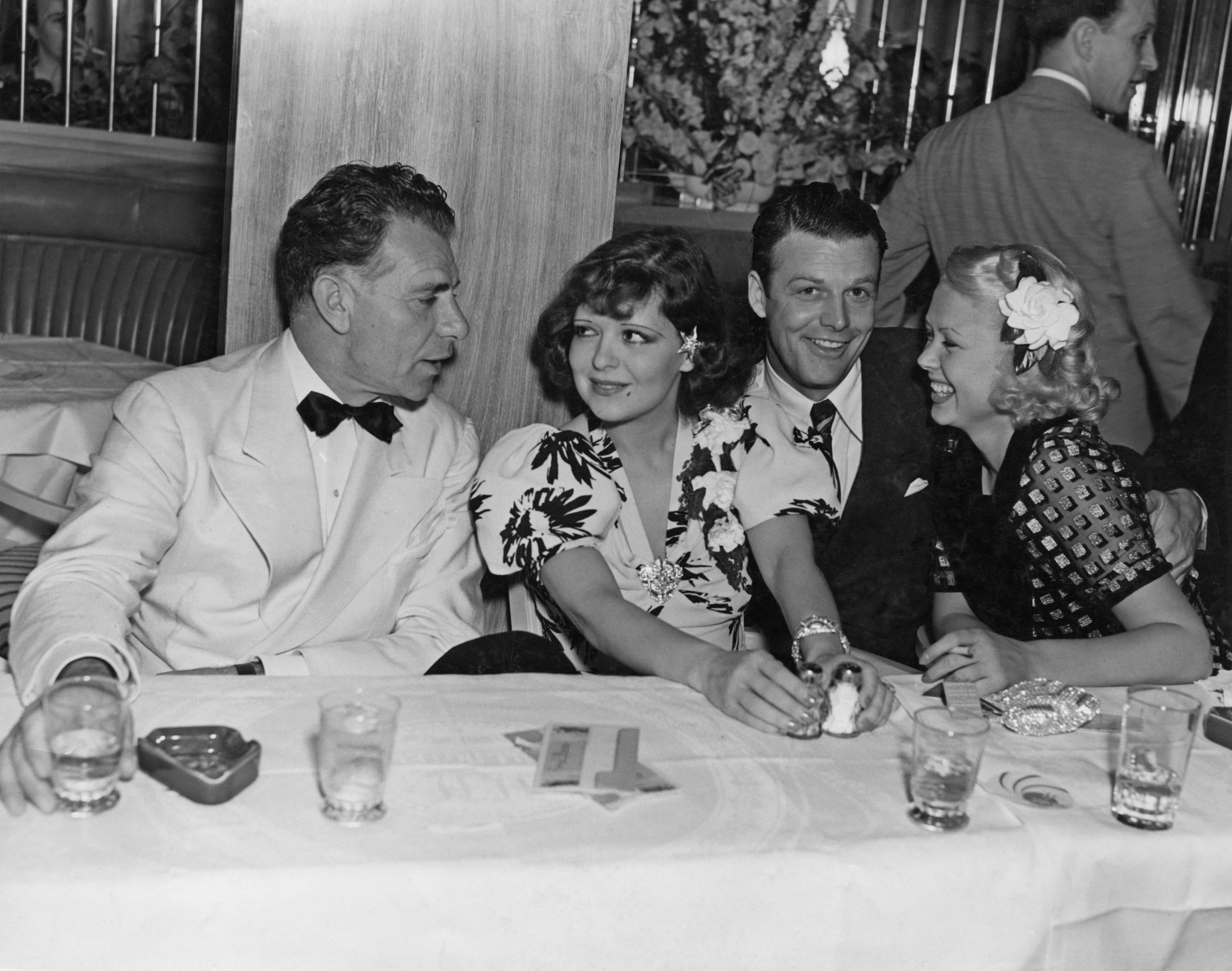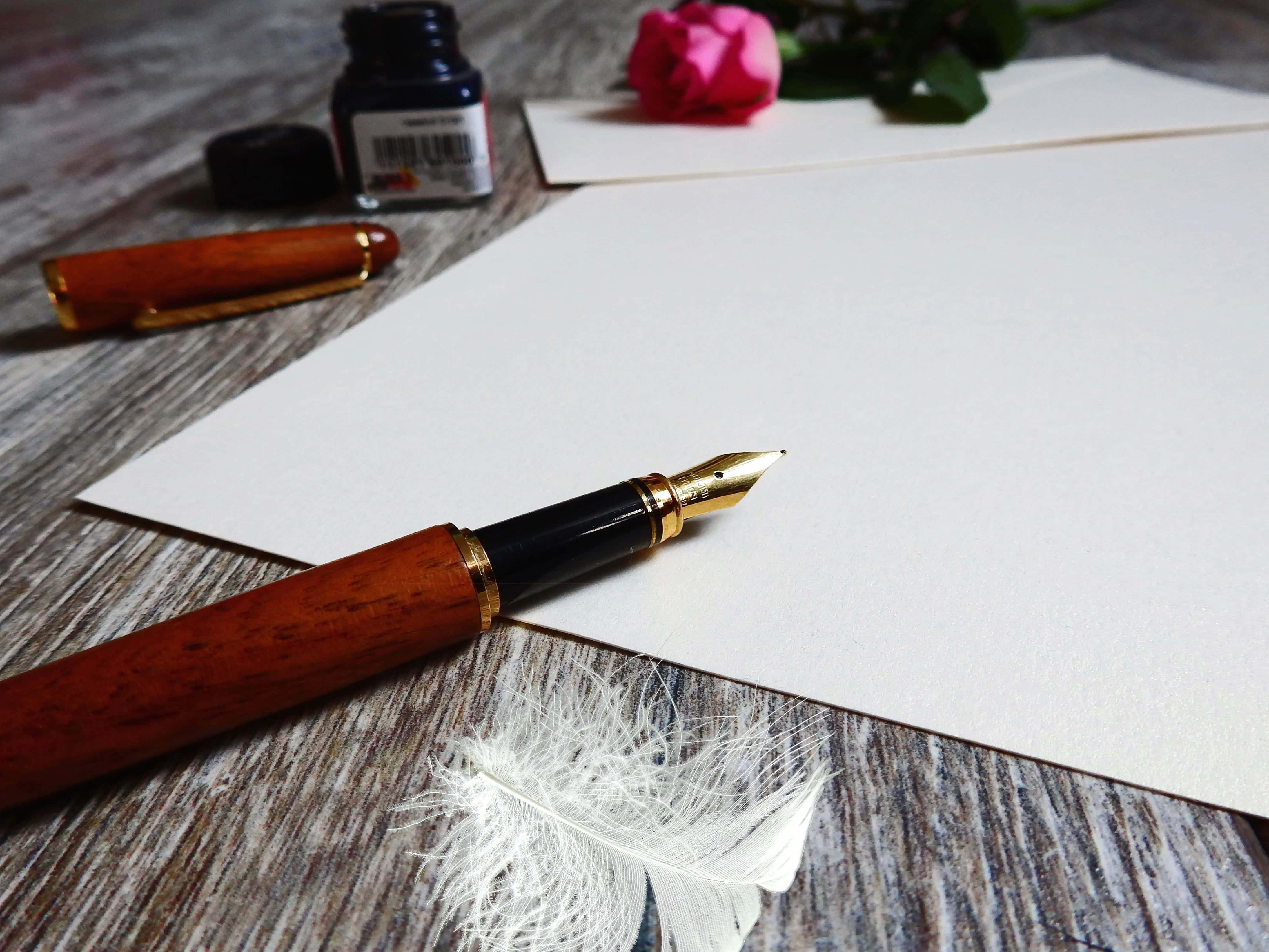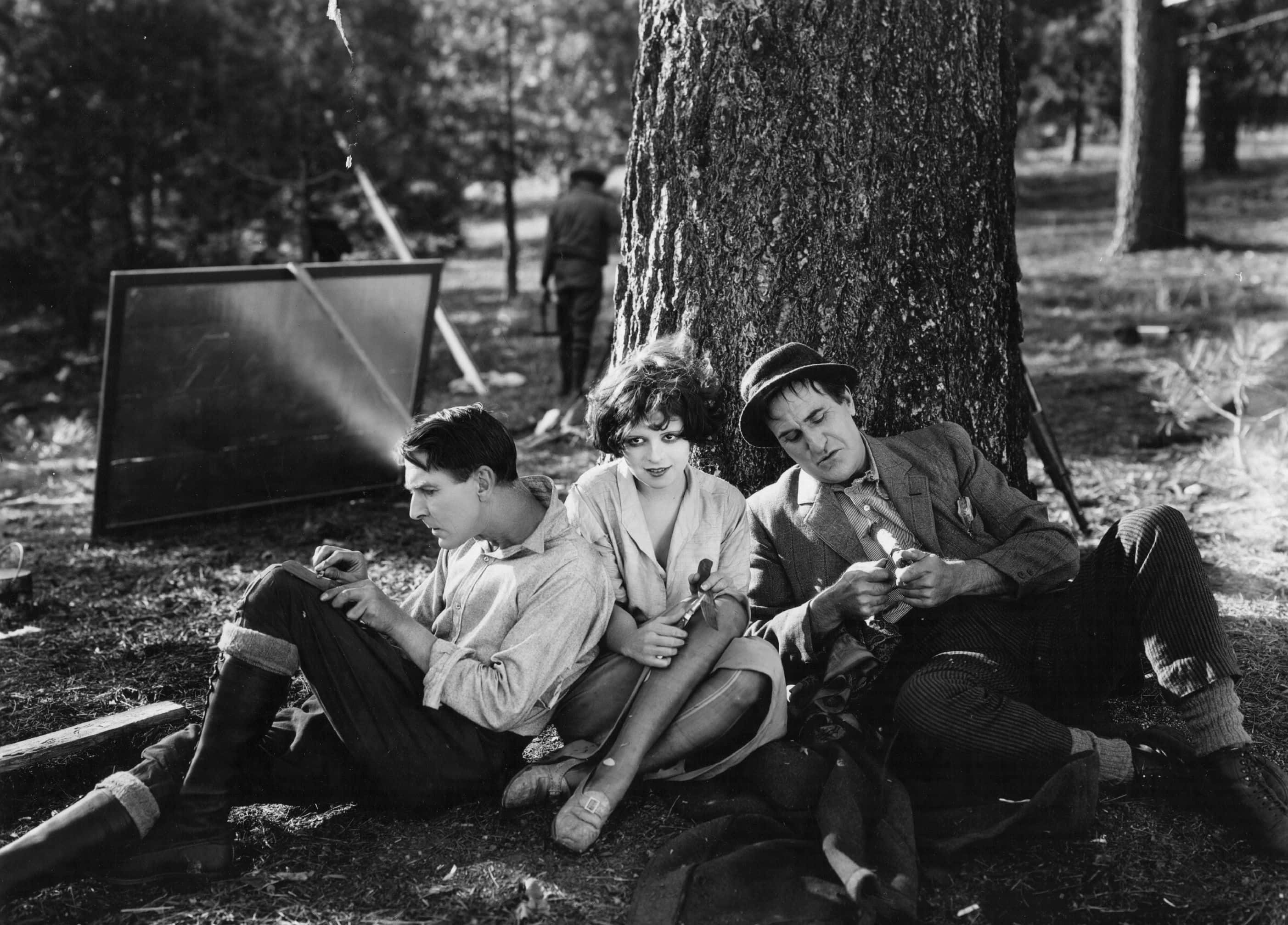Clara Bow is a silent film actress from the 1920s who is largely considered Hollywood’s First "It" Girl. With her tomboy charms and expressive face, Bow took Old Hollywood by storm as one of the most iconic “flapper” actresses of her day.
These days, Bow’s name isn’t uttered with the same esteem as silent stars such as Lillian Gish or Charlie Chaplin. If you ask us, that’s a darned shame. Her life and career had both the credits and the scandal to match either of those legends. One doesn’t become the first “It” Girl without attracting a fair share of lurid Old Hollywood stories. From her violent past to her tragic end, here are 42 star-studded facts about Clara Bow, the first “It” Girl.
Clara Bow Facts
42. You’ve Got Mail
In January 1929, Clara Bow received more than 45,000 letters in a single month. In a purely-postage world, that’s a lot of licked stamps.
41. Save the Date (or Don’t)
Bow’s year of birth is a mystery. Although her gravestone says she was born in 1907, one US Census records her birth in 1905. Another census, however, lists her as born in 1906. The 1905 date is generally accepted as the “good enough” answer.
40. Started From Atop the Bottom
Bow’s birth might be a mystery because she was born to very humble origins. It’s said she entered this world in a “bleak, sparsely furnished room above [a] dilapidated Baptist Church” in Brooklyn.
39. A Rough Landing
Bow’s birth was also risky: her two older sisters had just died in infancy and her mother was medically advised to not become pregnant again. If that wasn’t enough, Bow was born amidst a massive heatwave. Despite it all, both mother and child were healthy.
To quote the actress, “I don't suppose two people ever looked death in the face more clearly than my mother and I the morning I was born. We were both given up, but somehow we struggled back to life."
38. Daddy Not-So-Dearest
In the first 18 years of her live, Bow’s family lived at 14 different addresses. Her father was frequently out of work, or else just not around. Bow would believe that her mother “never really loved” her father and that “He knew it. And it made him very unhappy, for he worshipped her, always.”
37. Drawn Back to Life
Cartoon character Betty Boop was partially modeled after Clara Bow, among others. The character is also inspired by fellow entertainer Helen Kane.
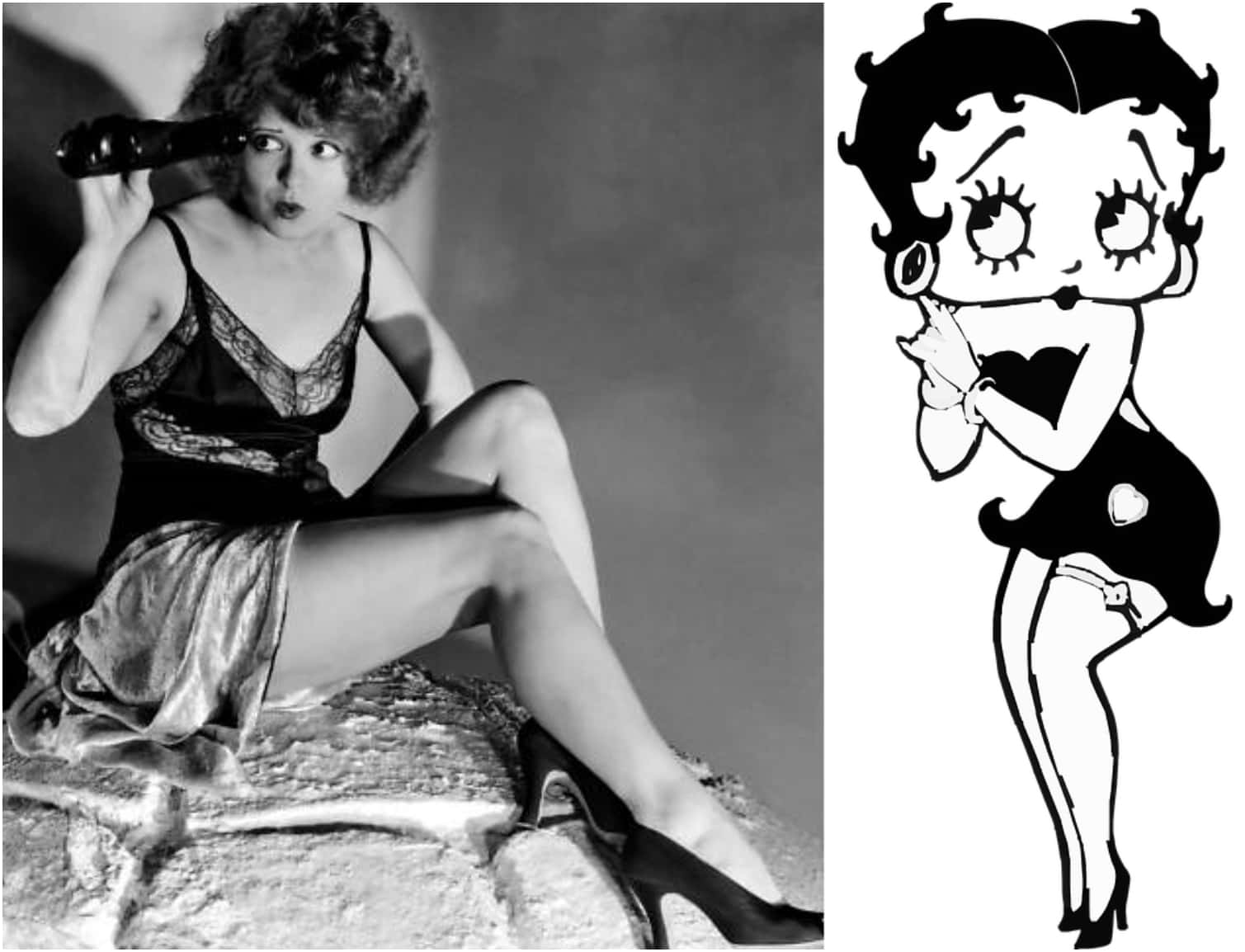
36. Fast on Her Feet
Bow was a tomboy and very into athletics. A winner of five medals at “the cinder tracks,” the actress would credit her success to the help of her cousin, Homer Baker, who also happened to be the world-recorder holder for the 660-yard and a national champion of the half-mile. Bow’s own talents would lay elsewhere, in entertainment.
35. We Have a Winner
Whereas Bow’s father was supportive of her acting dreams, her mother once declared that her daughter “would be much better off dead" than an actress. Nevertheless, Bow competed in her first nationwide acting contest when she was only 16.
In 1921, she entered in the annual “Fame and Fortune” competition, where winners often moved onto motion pictures. She won, blowing even an experienced actress out of the water, but nothing happened with her career right away. Nevertheless, she was noted for her “confidence, determination, and ambition” as well as “a mentality far beyond her years.”
34. Stand Your Ground
Brewster publications initially failed to deliver on acting jobs for their contest winner. Bow’s father picked up the slack. He instructed his daughter to “haunt” their offices until they delivered the goods—i.e. roles.

History's most fascinating stories and darkest secrets, delivered to your inbox daily.
33. False Start
After much harassing, Bow got Brewster publications to introduce her to director Christy Cabanne, who put her in Beyond the Rainbow (1922). Although Bow shot five scenes and made an impression—the director actually cried at her performance—her work didn’t make the film’s final cut.
This snub devastated Bow, who was starting to think that her mother was right about her acting career. Discouraged, Bow took an office job.
32. A Pound Too Much of Flesh
Early in her career, Bow was often told she was “too fat” to get the right parts.
31. She’s Got It
Clara Bow’s big break came with her role in the 1927 movie It, a silent film adaptation of an Elinor Glyn novella—not the Stephen King horror novel. The movie was a blockbuster and earned her the nickname “It Girl.” The “It-Girls” of the future had her to thank for the moniker.
30. Mad With Success
Bow starred in the first movie to ever win Best Picture at the Oscars. That would be Wings in 1927. The director William Wellman described her as “mad and crazy, but WHAT a personality!”
29. Patience Pays Off
In 1926, Bow signed with Paramount in her first-ever contract. In exchange for retaining her services for six months, she would receive $750 a week. Not bad for a girl who once held out for just $50 a week with Elmer Clifton in Down to the Sea.
28. Just Horrid Enough to Work
With her tomboyish figure and bright personality, Bow was called “the personification of the ideal aristocratic flapper, mischievous, pretty, aggressive, quick-tempered and deeply sentimental" by Black Oxen director Frank Lloyd. She beat out 50 other actresses for her breakthrough role as the “horrid” flapper.
27. Not Ready for Her Close-Up
What’s an Old Hollywood article without an Old Hollywood Feud? Bow had a complicated relationship to fellow actress, Collen Moore. For one, Bow’s defining “flapper” flick had the awkward fortune of coming just six weeks before Moore’s flapper debut in Flaming Youth. To make things more awkward, it was requested that Bow play Moore’s kid sister in Painted People (The Swamp Angel); Bow, the less established actress at the time, insulted her by saying, “I don’t like my part, I wanna play yours.” Moore did the mature thing and blocked the director from shooting any of Bow’s close-ups.

26. Ripping Off the Band-Aid
Bow never got to finish Painted People with her rival, Colleen Moore. The young Bow came down with sinus problems and had them treated, resulting in her face getting covered in bandages. As a result, the studio had to recast her role. Too bad—who doesn’t love a good Hollywood feuds.
25. Wealth in Her Wake
After a lifetime of fame, Bow’s final estate was valued at half a million dollars—about $4 million in today’s money.
24. Not Skipping Leg Day
Bow is credited as the first person to wear “hand-painted legs” in public. In June 1925, she made her leggy debut on the California beaches, a statement which drew many followers.
23. Who’s Got Time for That?
In addition to athletics and acting, Bow was also a fan of poetry and music. The only art that was off-limits to her, according to some, was novels. She simply didn’t have the attention span for long-form literature.
22. Stick Your Nose Up at This
Bow had plenty of charm, but not a lot of high-class manners. In fact, her demeanor was considered quite “dreadful” to high society. She acted as a constant reminder of Hollywood’s ambiguous position to the upper-class order. Bow refused to bow down to their “old” rules and stated, “They yell at me to be dignified. But what are the dignified people like? The people who are held up as examples for me? They are snobs. Frightful snobs ... I'm a curiosity in Hollywood. I'm a big freak, because I'm myself!"
21. Too Many Words
Unlike many silent film stars, Bow was able to maintain her success into the age of the “talkies.” However, that didn’t mean she had to like it. Like her colleagues Charlie Chaplin and Louise Brooks, she looked down on sound film and called it “stiff and limiting. You lose a lot of your cuteness, because there’s no chance for action, and action is the most important thing to me.”
20. Can’t Shut Her Up
Despite what has been reported, Bow’s thick Brooklyn accent did not get in the way of her success with “talkies.” In 1929, she starred in three talkies and maintained her position as Hollywood’s box-office queen.
19. You Have to See It to Hear It
The shift from silent films to talkies shook up Bow’s confidence. Not used to microphones, several scenes in The Wild Party had to be reshot because her eyes kept looking up at the overhead sound equipment. Riddled with nerves, it was reported she kept “rows of bottles of sedatives” at her bedside just to keep it together.
18. Taking a Break
By 1931, Clara Bow was sometimes referred to by executives as “Crisis-a-day-Clara.” The pressure of fame, her fading star, and a troubling lawsuit from her secretary put Bow’s mental health in a bad place. Entering a sanitorium at the age of 25, she asked to be released from her final film with Paramount. This retreat effectively ended Bow’s career.
17. Life on the Ranch
Bow made her peace with Hollywood… by getting the heck out of it. With her partner, fellow actor Rex Bell, she left for his Nevada ranch, which she called her “desert paradise.” The couple were married in December 1931 in a Las Vegas ceremony. Thanks to a more stable regime of food, sleep, and exercise, Bow managed to become healthy again—for a time. In her words, she only returned to Hollywood “for the sole purpose of making enough money to be able to stay out of there.”
16. Leave It to Bow
Just two years after her marriage to Rex Bell, Bow officially retired from acting. The couple would have two sons, Tony and George.
15. A Sip of the Old Glory
Bow never left her “It Girl” persona behind. In her retirement, she and her husband opened “The ‘It’ Café” in the Hollywood Plaza Hotel in 1937. The place ran for 6 years, closing in 1943.
14. Sounds Familiar
Bow’s final public performance was not on screen, but on the radio. She made a cameo as the “mystery voice” in the 1947 radio show Truth or Consequences in their “Mrs. Hush” contest. What a fitting final curtain for a performer who got her start in a national competition.
13. It’s A Smaller World After All
Unfortunately, Bow seems to have inherited her mother’s history of mental health issues later in life. After her retirement, she became increasingly withdrawn, both refusing to interact with her husband or let him leave the house by himself.
 Pixabay
Pixabay
12. Early Exit, Aborted
In 1944, Bow’s husband Rex Bell ran for the US House of Representatives. Tragically, at the same time, Bow unsuccessfully tried to take her own life. Bow left behind a note, where she declared that she would rather end her own life than live it so publicly.
11. Imperfect Patient
Following her suicide attempt, Bow resided in the Institute of Living in Connecticut for her chronic insomnia and abdominal pains. She was subjected to shock therapy and diagnosed with schizophrenia, although she never experienced hallucinations.
10. Remember Me By My Important Info First
Clara Bow’s crypt displays her married last name (Bell) first and has the wrong year of birth (1907, not 1905). However, the placard makes sure to let us know that she was, indeed, “Hollywood’s ‘It’ Girl.”
9. Alone Again
Bow did not return to her family after her exit from the Institute of Living. Instead, she spent the rest of her years in a bungalow, rarely ever leaving it. Her nurse, Estalla Smith, was her only companion.
8. A Long Time Coming?
On September 27, 1965, Clara Bow passed away from a heart attack in her Los Angeles home at the age of 60. Curiously, her body underwent an autopsy, which revealed that Bow had secretly suffered from atherosclerosis, a type of heart disease, which could have present since her early teens.
7. Three’s Company, Four Is a Crowd
Scandalously for the 1920s, Bow moved in with her boyfriend, cameraman Arthur Jacobson, in 1924. Although Bow’s father was also living with them, this premarital arrangement was still unacceptable by the standards of their day. More importantly, it enraged her studio chief B. P. Schulberg. The boss fired Bow’s boyfriend, which, in turn, enraged Bow. The actress allegedly ripped up her contract, flung it in Schulberg’s face, and told him to stay out of her life. Afterward, Bow’s father would be her “business manager” and Jacobson was referred to as her “brother” for decency’s sake.
6. Not the Doctor’s Orders
Doctors credited Bow’s 1944 “psychosis” to her mother’s assault against her with a butcher knife back in 1922. However, Bow ultimately refused any and all psychological explanations for her illness and checked herself out of the hospital.
5. Maternal Affliction
When she was 16, Bow’s mother fell out of a second-story window and suffered brain injuries that would likely contribute to her epilepsy and psychosis. Mrs. Bow would grow to resent her daughter and once put a knife to the teenager’s throat. The assault led to her mother’s commitment to a sanitorium, where she later died at the age of 43.
4. Lies Don’t Pay
In 1931, Bow became the target of a blackmail scandal. A tabloid called The Coast Reporter accused the actress of many “garish” acts, including (but not limited to): exhibition, incest, homosexuality, drugs, alcohol, and even venereal disease.
The publisher tried to force Bow to pay $25,000 in exchange for not publishing the libel. Fortunately, federal agents promptly caught the blackmailer and sentenced him to eight years in prison.
3. Words Hurt
Even at the height of her success, film executives had little respect for their biggest box office draw. Some called her a “birdbrain” and “dumbbell,” even as she worked hard to bring them money.
2. Nothing to Hide
Clara Bow was just trying to tell her life story to Photoplay magazine when she (1) might have invented celebrity biographical culture and (2) “betrayed” the private sensibilities of Old Hollywood.
In an age where actors desperately tried to hide any aspect of their personal life, Bow bore it all in her piece titled “My Life” for the magazine. Her first-person narrative was hugely controversial not so much for its content—but for the very idea that a star should be honest about their life.
1. One of the Boys
Growing up, Bow was a guy’s gal; she ran with a “gang” of male friends until her blossoming “womanhood” made it hard to be just one of the dudes. She also saw one of these boys burn to death in front of her in a childhood accident.


















